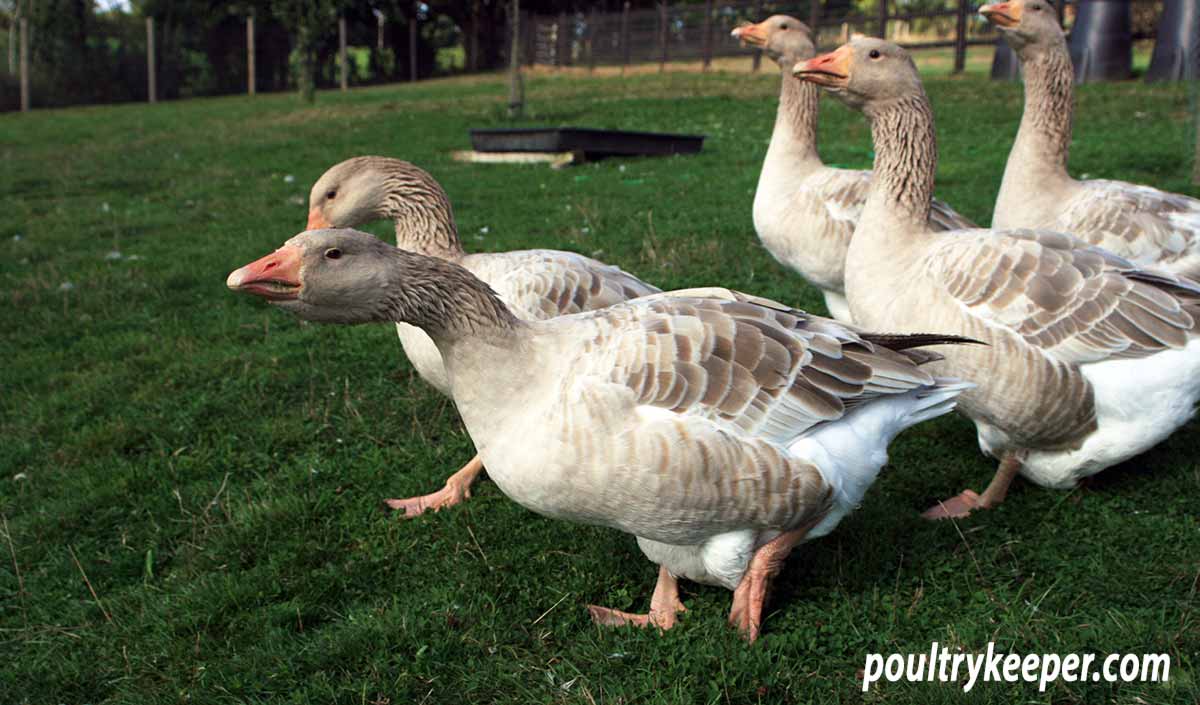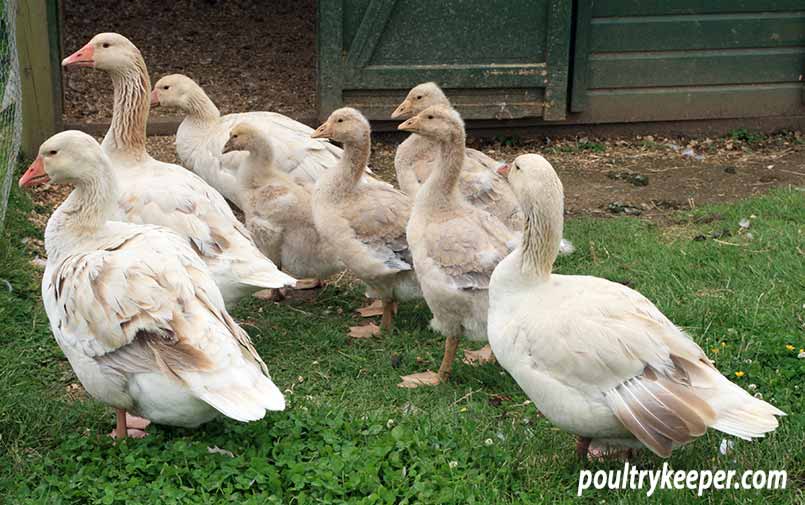
If you acquire one or more new geese, you may want to add them to an existing flock. Introducing new geese can be tricky at times. They are intelligent birds and often form strong family bonds that need to be respected when making introductions.
It is an exciting time when you acquire new geese; however, it can also be worrying when you bring your birds home to find out your flock doesn’t accept them.
Introducing new geese to an established flock should be done with an abundance of caution to be as stress-free as possible. Geese are intelligent animals and form a strong bond with the other geese within their flock. There can be fighting or rejection, even when a single female goose is introduced as a replacement.
First steps: Quarantine
First things first. Before any introductions are made, you should first consider the risk of your new birds carrying a disease. While waterfowl are relatively robust compared to chickens and don’t tend to get sick too often, you should always be careful of bringing disease in.
A two-week quarantine is a norm for any new poultry you bring in. I have made mistakes before; it’s easy to think they are well, until a week later they are not!
Remember, poultry and waterfowl are prey species, so do not show illness signs until they are really sick.
Unless you are 100% confident your birds are coming from a disease-free flock; then I would keep them away from your flock for a quarantine period.
This time spent in quarantine is not wasted; the geese are getting used to seeing and hearing one another, which helps when introducing new geese.
Keep your new goose or geese in the vicinity of your existing flock, where they can see and hear one another, to start the integration process. You will need a physical distance of at least a few meters; they must not be able to meet one another through the fence. That defeats the purpose!
Introducing new geese
It is better to introduce a new goose during the summer or late autumn/early winter not to disrupt the mating season. Autumn is often the time we buy poultry. Breeders start to sort through excess stock they don’t want to over-winter, and there are often poultry auctions and shows with sale-pens for geese.
When introducing chickens, it is often best to allow as much space as possible so the lower bird in the pecking order can escape, and I have seen suggestions online with hobby farmers suggesting you introduce a new goose in the morning when letting geese out, but the reverse is true for geese.
I learned the method of introducing new geese in Reginald Appleyard’s 1950’s reprint of his book: Geese, breeding and management.
Remove the gander
The first step is to separate the gander from the flock (assuming you have one).
Remember, ganders will fight, causing serious damage to one another, so I wouldn’t ever recommend trying to introduce any more than one gander to a flock. Domestic geese are best kept in small flocks with one gander to one or more females.
Introduce the females
Place the females in a small area so that they cannot roam. A small building or shed is ideal. Introduce the new female at night. They are forced to “rub shoulders” with the new goose and will not be too happy at being confined but will get used to her presence.
Monitor the introduction, they should not fight much, and without the gander present, the situation is diffused.
The next day, keep a close eye on them but do not let them out. Provide wheat in a bucket of water for them. Once they stop squabbling, they can be released and allowed to roam as a group.
Sometimes it can take four or five days to reach this point. When I have done this with my Brecon Buff geese, it usually takes no more than a day. My African geese accepted a newcomer in three days. I expect it will vary according to the breed, the time of year, and the strength of your geese’s bonds.
Once they are happily roaming as a group again, the gander can be re-introduced to the geese. Again, introduce him at night in their house/shed. He should accept his ‘wives’ happily, and peace is restored.
Caution:
Geese form powerful bonds with one another, especially during the breeding season. They can cause damage to a newcomer very quickly. Always monitor introductions carefully and never introduce a new goose when the gander is present in the flock.
Young geese and goslings
Introductions are generally easier with younger geese, and you will probably find them accepting one another after the initial fuss, I would not go to such lengths when introducing young geese, I would try a more gradual introduction outside behind a fence so they can get close without causing any harm at first.
I have found young females are no threat and readily accepted into the flock within hours.
With goslings, the whole flock will take good care of them. I often hatch goose eggs in my incubator, and once the goslings are robust enough to be out foraging on grass, and off heat, I let my adult geese take care of them.
The whole flock raises and protects goslings which is very useful indeed.

I am interested to hear how your introductions have gone and hope to hear about your experience introducing new geese. African/Chinese ganders seem to form very strong bonds with their geese.
Please leave me a comment below.




